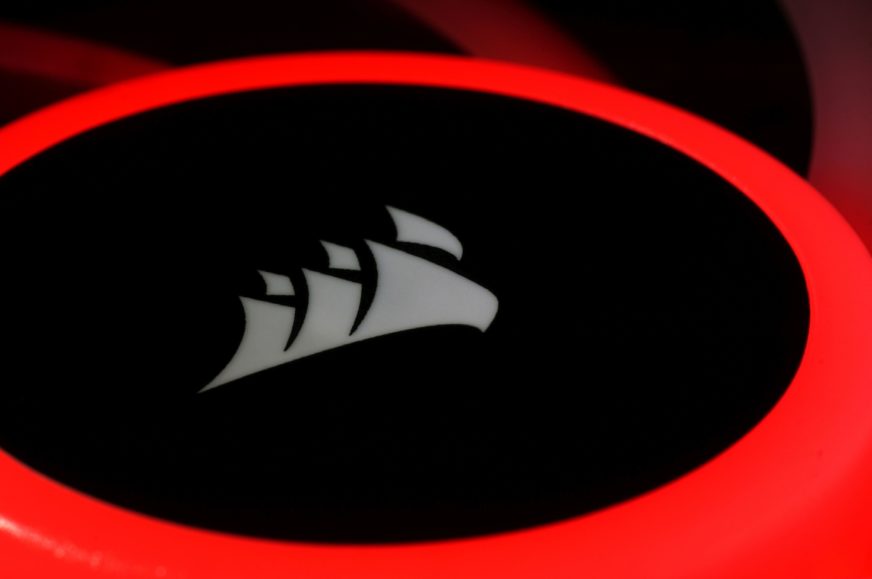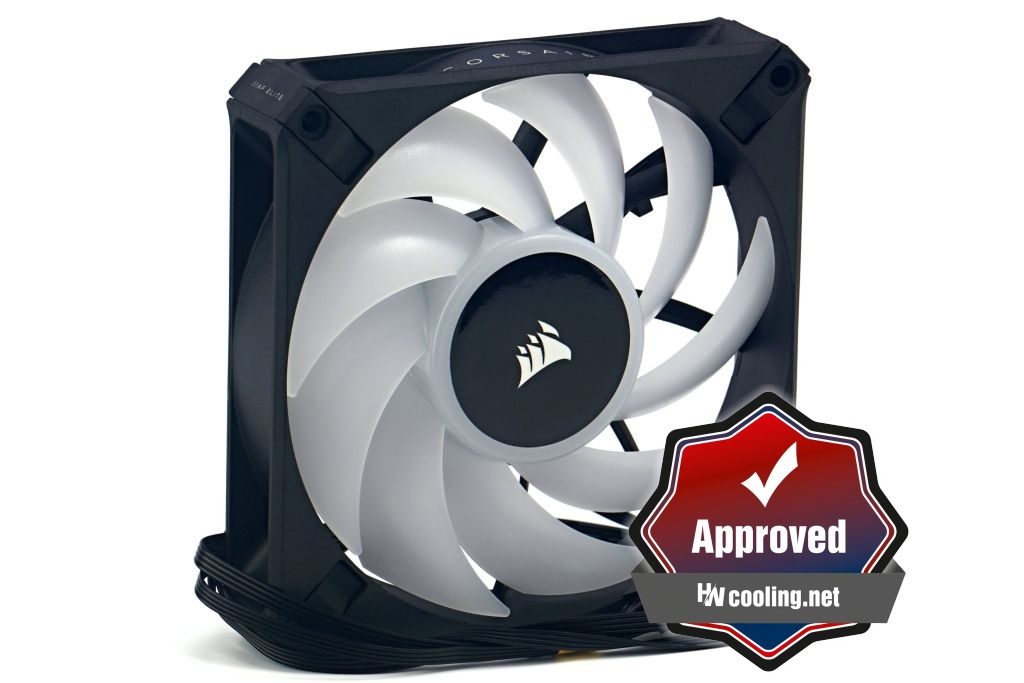Evaluation
We consider the Corsair AF120 Elite to be one of the most pleasant surprises of last year when it comes to fans. There wasn’t much to complain about with the simple but effective design… Someone may have missed the lighting though. The “RGB” model added this after some time. However, this is not the only change, there are more and these include, for example, higher speeds. However, the wide range (with low minimum speeds) remains.
Evaluation
The efficiency of the Corsair AF120 RGB Elite can be classified as above average among 120mm lighted fans. Though this is also true for the Asus TUF TF120 for half the price in a non-restrictive environment (without obstacles), but on dust filters it even achieves a slightly higher airflow at comparable noise levels. The worse sound profile of the AF120 RGB Elite is especially in combination with a plastic filter. We couldn’t even regulate the fan to “33 dBA” due to a critical tonal peak at 269 Hz. It is well illustrated by this spectrograph, which is 0.5 dBA above the aforementioned reference noise level. Overall, the results in this environment are weaker, below average.
With a nylon filter, the fan rises in the rankings, but for higher static pressure it’s really attractive on radiator fins. On these, it already has the upper hand compared to the TF120 across the entire speed spectrum, but most notably at low speeds around 720rpm. But even then it is below the DeepCool FC120 – on a thinner, denser radiator, but also on a thicker one with less dense finning. But this is actually a very good sign, as the DeepCool fan has not yet found a conqueror among the lighted variants in its format. Both of these fans rumble at lower frequencies due to their long flexible blades, but the AF120 RGB Elite is a bit noisier there. Its advantage, however, is that unlike the FC120 it transmits virtually no vibration to the frame. And that’s not even at top speed, which is a rather unique feature.
Fans with similarly negligible vibration are usually slower. This seems like a paradox given the distinct tonal peaks resulting from the vibrations, but there are two explanations for this, which can work in symbiosis with each other. The resonant frequencies due to the design of the blades arise at low vibrations. With blades of a different design (shape, material, …) such distinct tonal peaks may not be achieved even at higher vibrations. And then the stiffness of the material may also play a role here, for example, which is possibly lower in the AF120 RGB Elite and thus the vibrations are lost on a shorter path. In other words, even though the Corsair fan is rumblier, at least the vibrations from the frame don’t resonate through the case or the cooler, in short, anything it’s in contact with.
The very low vibrations are also a testament to the perfect build quality, which is also visible. All the edges of the fan and also its surface, are really smooth. So the manufacturing tolerances are perched really low and the result is thus second to none. This is also one of the arguments for choosing the AF120 RGB Elite. With lighted fans, first-class precision is usually not that much of a consideration.
Energy efficiency is mediocre, whether it’s airflow per unit of power draw or luminance. In this, the AF120 RGB Elite stays in the grey zone.
Support for Corsair’s iCUE app can be considered some added value, but it comes at the cost of proprietary 4-pin ARGB connectors. These can be considered a negative by someone who wants to connect the fans directly to the motherboard, as you need to buy an adapter from 4-pin iCUE to standard 3-pin ARGB.
In conclusion, the Corsair AF120 RGB Elite isn’t a fan “for everyone”, but as long as you know it well and know exactly why you’re interested in it, you can’t go wrong with it.
English translation and edit by Jozef Dudáš
| Corsair AF120 RGB Elite |
| + Suitable for every use case |
| + Cooling efficiency (airflow/pressure per unit of noise) at a very high level |
| + High airflow and static pressure even through an obstacle |
| + Wide speed range plus passive operation |
| + Very low speeds possible (stable from approx. 271 rpm) |
| + Virtually noiseless operation of bearings and motor (no non-aerodynamic noises) |
| + Perfect build quality |
| + Support for the highly sophisticated Corsair iCUE application |
| + Almost no vibrations on the frame, even at maximum performance |
| + Really powerful motor |
| + High luminance rotor lighting |
| - Often rumblier operation with tonal peaks at lower frequencies |
| - Weaker price/performance ratio with dust filters |
| - Adapter from 4-pin iCUE to 3-pin ARGB not included (for direct connection to the motherboard) |
| Orientačná koncová cena: 29 eur/690 Kč |
- Contents
- Corsair AF120 RGB Elite in detail
- Overview of manufacturer specifications
- Basis of the methodology, the wind tunnel
- Mounting and vibration measurement
- Initial warm-up and speed recording
- Base 6 equal noise levels…
- ... and sound color (frequency characteristic)
- Static pressure measurement…
- … and airflow
- Everything changes with obstacles
- How we measure power draw and motor power
- Measuring the intensity (and power draw) of lighting
- Results: Speed
- Results: Airlow w/o obstacles
- Results: Airflow through a nylon filter
- Results: Airflow through a plastic filter
- Results: Airflow through a hexagonal grille
- Results: Airflow through a thinner radiator
- Results: Airflow through a thicker radiator
- Results: Static pressure w/o obstacles
- Results: Static pressure through a nylon filter
- Results: Static pressure through a plastic filter
- Results: Static pressure through a hexagonal grille
- Results: Static pressure through a thinner radiator
- Results: Static pressure through a thicker radiator
- Results: Static pressure, efficiency by orientation
- Reality vs. specifications
- Results: Frequency response of sound w/o obstacles
- Results: Frequency response of sound with a dust filter
- Results: Frequency response of sound with a hexagonal grill
- Results: Frequency response of sound with a radiator
- Results: Vibration, in total (3D vector length)
- Results: Vibration, X-axis
- Results: Vibration, Y-axis
- Results: Vibration, Z-axis
- Results: Power draw (and motor power)
- Results: Cooling performance per watt, airflow
- Results: Cooling performance per watt, static pressure
- Airflow per euro
- Static pressure per euro
- Results: Lighting – LED luminance and power draw
- Results: LED to motor power draw ratio
- Evaluation









